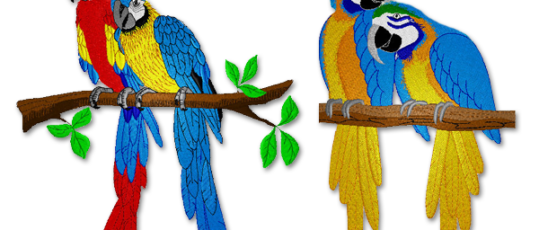Trustworthy Digitizing for Embroidery: Trusted by Specialists
Trustworthy Digitizing for Embroidery: Trusted by Specialists
Blog Article
Grasping the Needlework Digitizing Refine: Your Ultimate Guide
Needlework digitizing is a meticulous craft that needs precision and proficiency to translate complex designs right into electronic formats for equipment needlework. As craftsmens embark on this journey to understand the needlework digitizing process, a detailed understanding of the basics establishes the foundation for quality.

Recognizing Embroidery Digitizing Essentials
Needlework digitizing essentials form the foundation upon which complex styles are equated into machine-readable formats for specific sewing. This initial action in the needlework digitizing procedure is essential for making certain that the last stitched item is a devoted representation of the initial style. Recognizing needlework digitizing basics includes understanding crucial concepts such as stitch types, stitch instructions, thickness, rug, and pull compensation.
Stitch types play a crucial duty in figuring out the aesthetic and textural result of the embroidered design. By choosing the suitable stitch kind, whether it be satin, fill, or running stitch, digitizers can accomplish the wanted impact and enhance the overall quality of the needlework. Furthermore, stitch direction influences the circulation and measurement of the design, while thickness identifies the spacing and insurance coverage of the stitches.
In addition, underlay sewing supplies security to the layout by securing the textile and stopping distortion throughout the needlework process. Pull payment is one more essential factor to consider to neutralize the all-natural tendency of textile to agreement when stitched. Understanding these needlework digitizing fundamentals is basic for creating professional-quality embroidered items.
Selecting the Right Digitizing Software Program
Selecting the appropriate digitizing software program is a crucial decision that dramatically affects the efficiency and high quality of the embroidery digitizing process. Digitizing for Embroidery. When selecting the right digitizing software, it is vital to take into consideration elements such as the complexity of styles you intend to create, the user-friendliness of the software, the degree of consumer support offered, and the compatibility with your needlework equipment
There are numerous digitizing software options readily available in the marketplace, varying from basic programs for novices to advanced software application for expert digitizers. Some preferred selections include Wilcom EmbroideryStudio, Hatch Needlework Software Program, and PulseID. These software offer a variety of devices and functions to aid you create elaborate layouts easily.
Prior to choosing, it is suggested to explore the different software options with totally free trials or demos to figure out which one ideal suits your requirements. Furthermore, checking out evaluations and looking for referrals from skilled digitizers can give important insights right into the strengths and weaknesses of each software program plan (Digitizing for Embroidery). By meticulously reviewing your demands and contrasting the functions of different digitizing software, you can make an informed option that boosts your needlework digitizing process
Digitizing Tools and Methods

Optimizing Style Setup for Needlework
Understanding the details of layout setups is essential in accomplishing optimal cause the needlework digitizing procedure, structure upon the foundation laid by understanding digitizing tools and strategies. When maximizing style settings for needlework, click here to read it is necessary to take into consideration variables such as stitch kind, density, underlay, draw payment, and registration. Sew kind choice impacts the total feel and look of the design, with alternatives like satin, fill, and running stitches providing various appearances and impacts. Density describes the spacing and thickness of stitches, affecting the layout's protection and sturdiness. Proper padding stitching provides security and avoids fabric distortion, especially for complicated layouts or on elastic products. Draw compensation readjusts for material stretch during sewing, guaranteeing exact style duplication. Registration setups line up various elements recommended you read of the style accurately, keeping overall style integrity. By fine-tuning these style setups, embroiderers can improve the top quality and precision of their stitched creations.

Troubleshooting Common Digitizing Issues
When encountering usual digitizing issues throughout the needlework process, it is vital to recognize the source and carry out reliable services without delay. One common issue is stitch density issues, where stitches may be also thick, causing the material to pucker, or as well thin, resulting in spaces in the design. Changing the stitch thickness setups in the digitizing software application can assist settle this problem.
An additional constant obstacle is string breaks during the embroidery procedure. This can happen as a result of various factors such as incorrect tension settings, boring needles, or utilizing low-grade string. Ensuring proper maintenance of the needlework maker, consisting of normal needle adjustments and tension modifications, can reduce the incident of thread breaks.
In addition, layout enrollment mistakes can cause misaligned aspects within the needlework layout. Examining the layout positioning in the digitizing software program and making essential changes prior to stitching can assist in avoiding this issue. By addressing these common digitizing issues promptly and effectively, you can ensure a smoother needlework procedure and top my website notch ended up products.
Verdict
To conclude, understanding the embroidery digitizing procedure calls for a strong understanding of the fundamentals, the best choice of software, and expertise of devices and techniques. Optimizing style setups and fixing common digitizing concerns are crucial action in ensuring top notch embroidery results. By adhering to these steps diligently, one can attain precision and effectiveness in the digitizing procedure.
Report this page